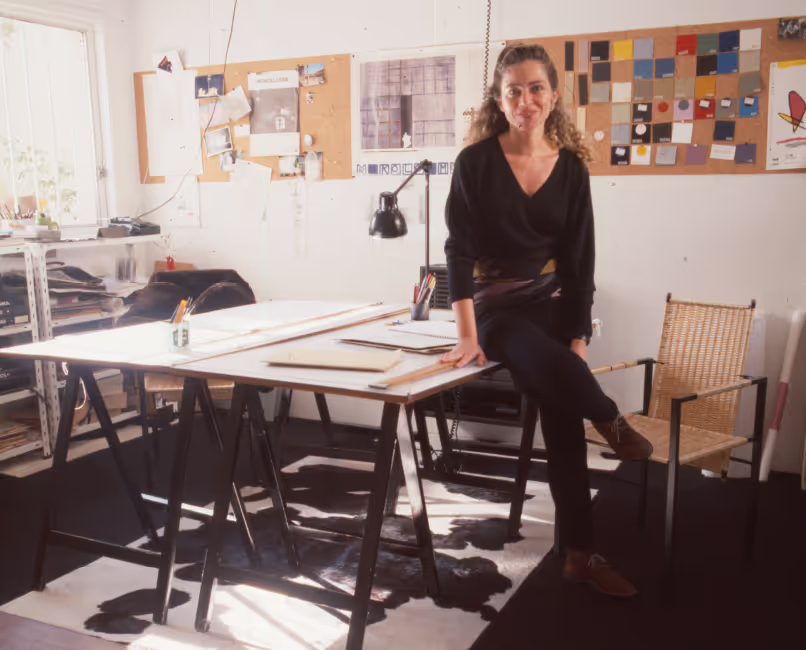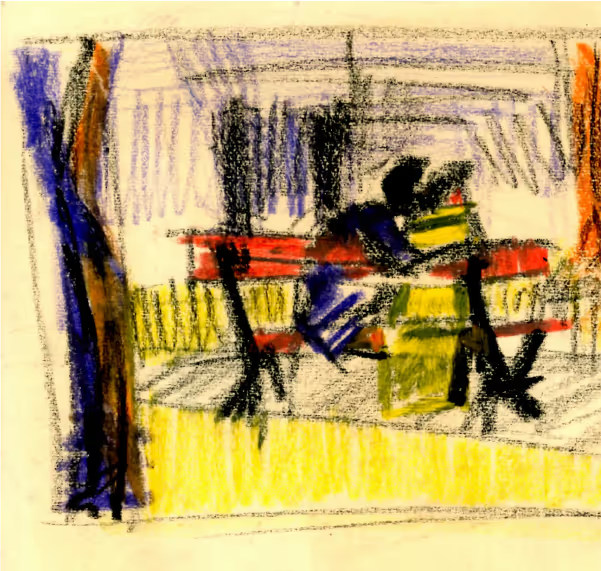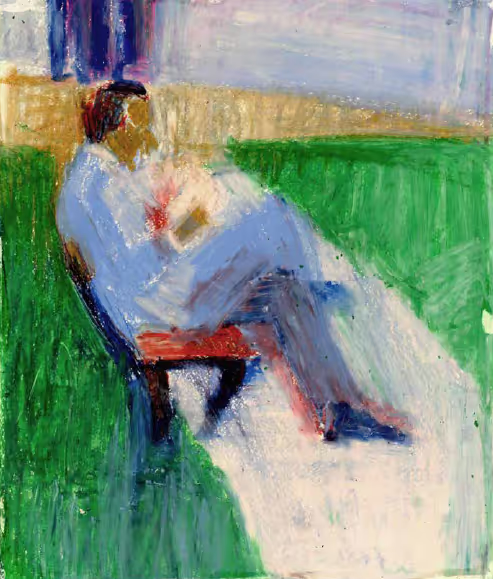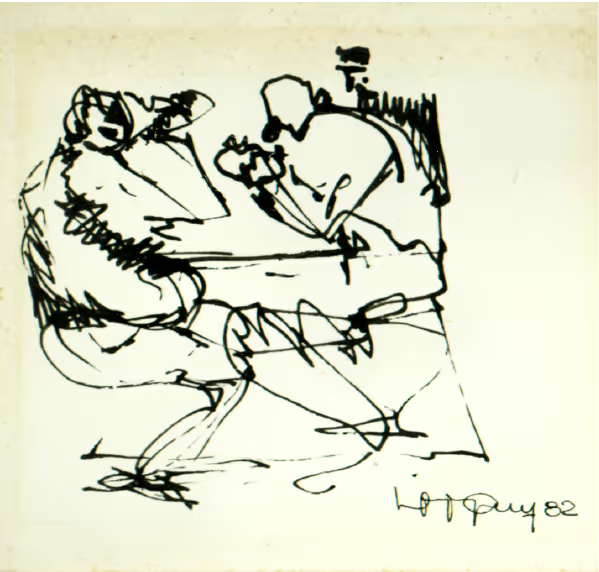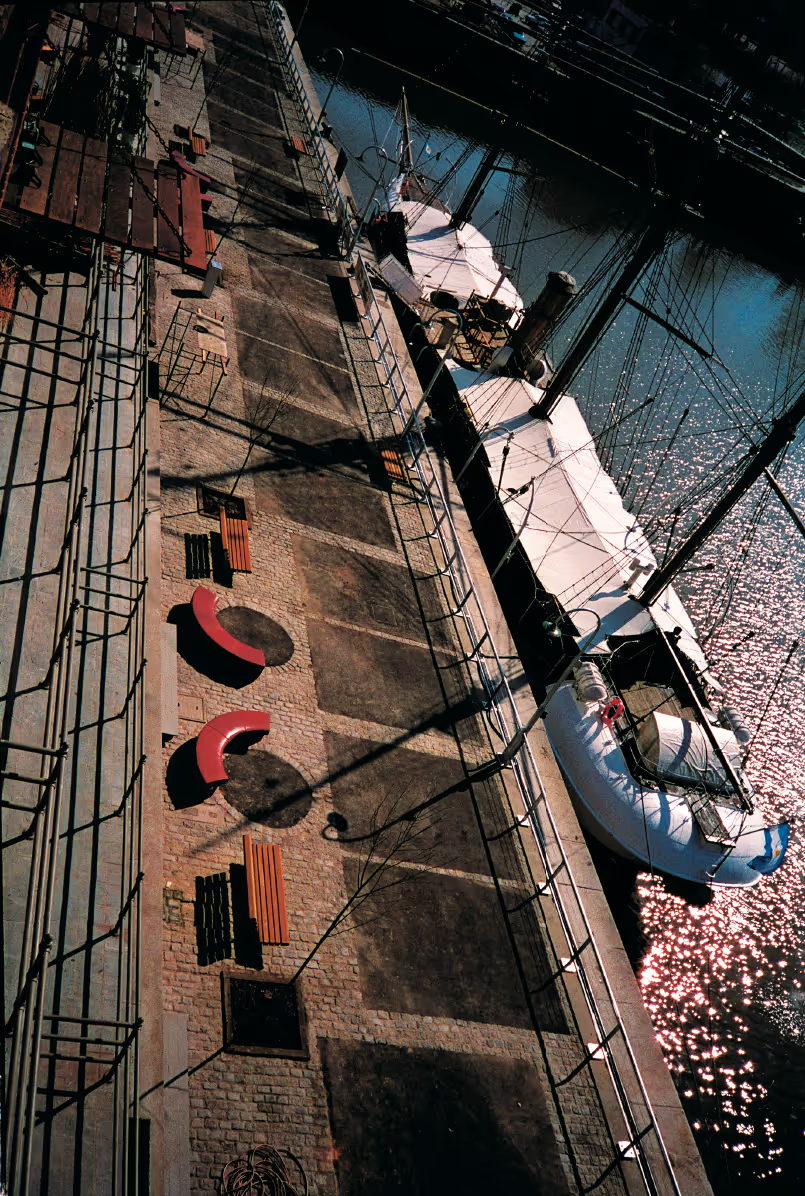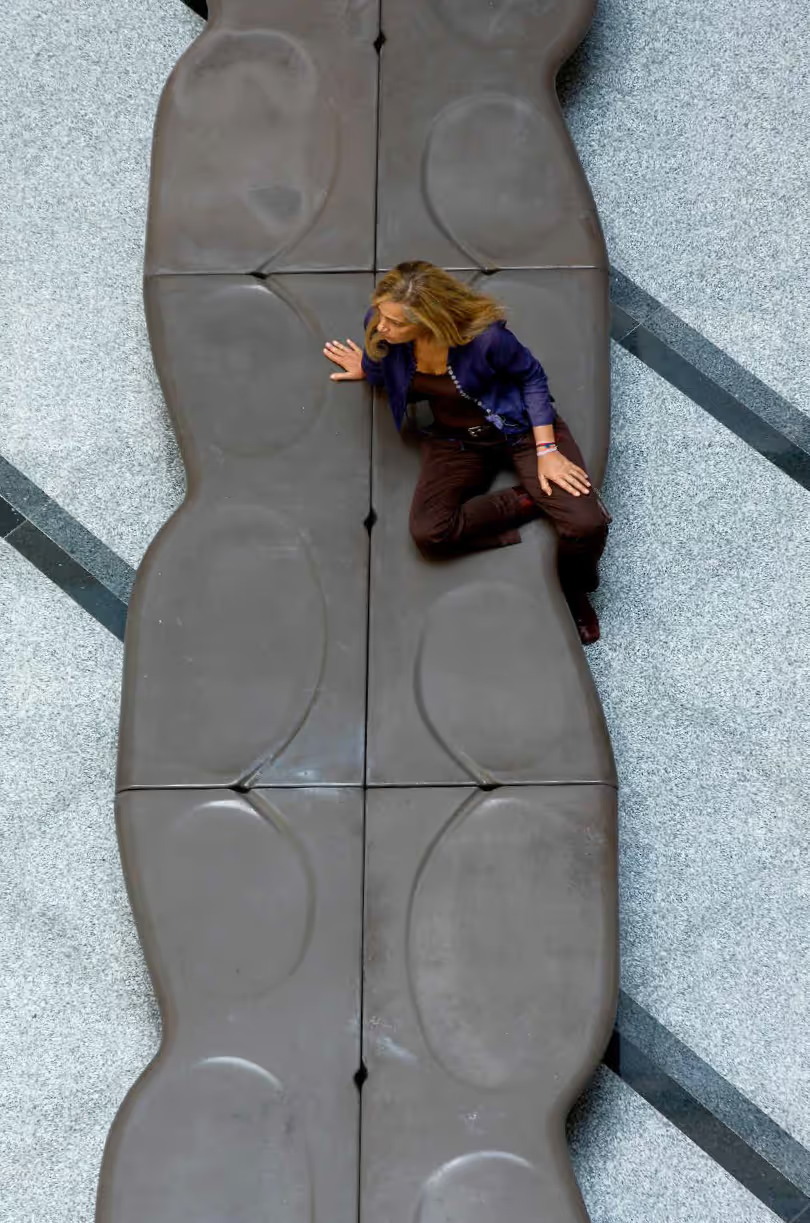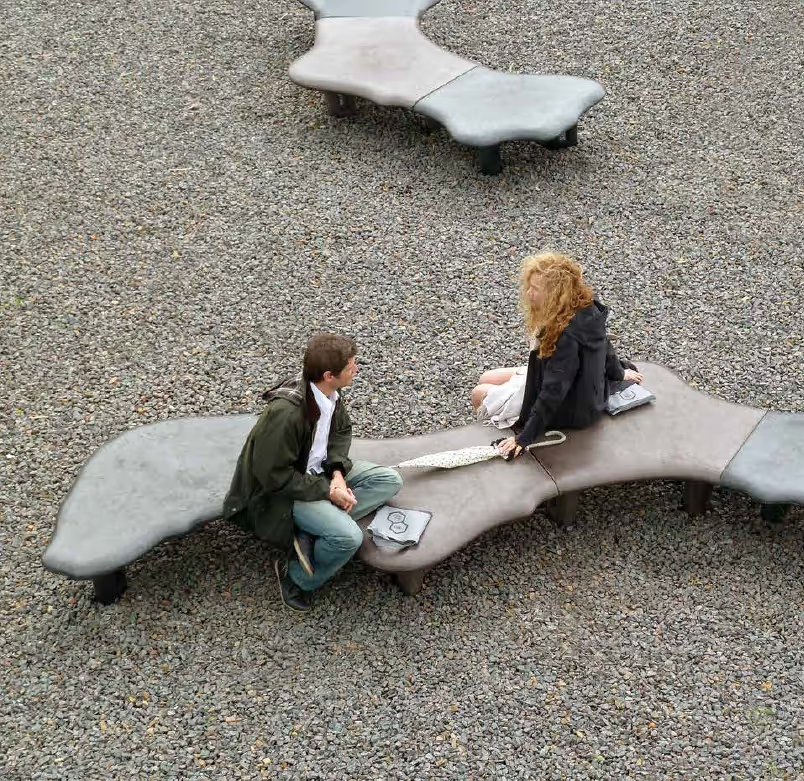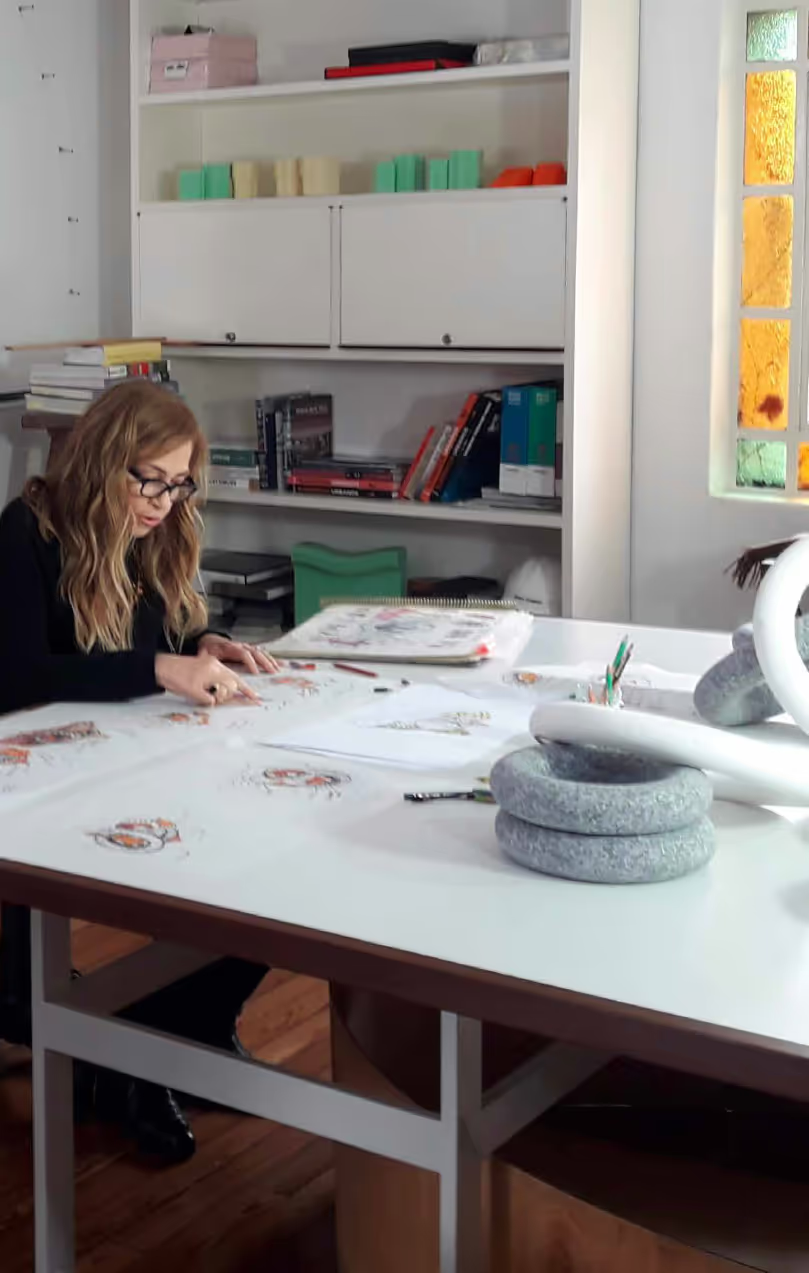Diana Cabeza
Buenos Aires, 1954-2024
Architect, designer and founder of Estudio Cabeza.
Diana Cabeza studied Fine Arts at the Prilidiano Pueyrredón School and architecture at the University of Belgrano. Her first sketches took as an object the urban landscape: Bars, squares and those who inhabited them.
Diana began her professional career as a designer of domestic equipment. Designing pieces that, in her own words, “have a scale that can be verified with the body”. The Galletita chair was her first product and the beginning of an approach committed to the revaluation of local materials, being the Sensual Pampa (1989) the piece where, inspired by the Pampa plains, she achieves her best synthesis between language, material and landscape and inaugurates the observation and survey of Argentine topographies.
In the early nineties he designed the equipment for the benches in Puerto Madero, a former port area. The Buque, Bote and Cornamusa benches recover the language of the old sheet metal, iron and wood boats, both in technology and in materials and evocation. It was as a result of his experience in the reform of Puerto Madero in Buenos Aires that he founded Estudio Cabeza, dedicated to the design and production of urban elements for public space.
She worked in our country, inspired by its culture and landscapes. Her works dress significant public spaces in different cities around the world, such as Buenos Aires, Rosario, Neuquén, New York, Chicago, Durham, Washington DC, Miami, Canary Islands, Almería, Lisbon and Bangkok, as well as equipping streets, squares, parks and museums in small towns and cities in Argentina. Among them are: the central spaces of Roppongi Hills and Toranomon Hills, in Tokyo; the urban furniture of the City of Buenos Aires; and the system of Metrobus stops.
Her designs, besides being exhibited in Argentina, Barcelona, Milan, Frankfurt and New York, were published, manufactured and awarded nationally and internationally.
Diana built the image and values of Estudio Cabeza. Her brand is characterized by the constant search and research of community habits and environments and the possibilities of sites and uses. Approached with the sensitivity of a citizen and the scale of an urban planner, each product she created synthesizes functionality, beauty and simplicity.
“I am a freehand and full-scale designer. My tools are: the hand, intuition, observation”

Approaching design from an anthropological and contextual perspective, I think in terms of “supports of use” and not “objects”. They implicitly carry the body and the place. Far from abstraction, neutral and non-typological, they help us think in the form of a verb, “rest, take refuge, gather…” My design scale goes from the scale of the urban or natural landscape to the scale of the site, where man and support are linked and where men among themselves establish a ritual and choreographic relationship sustained by the supports of use. I consider that design, material culture and technology are tools to contact life and humanize the different layers of protection of man.”
Diana Cabeza, lead designer and head of Estudio Cabeza, received the Konex Platinum Award awarded by the Konex Foundation in that year for her work in the field of Industrial Design after being honored twice previously with merit diplomas. (2002 and 2012)
First Prize in the AFIP Building Contest: Exterior Plaza, Interior Street, and Institutional Hall, in collaboration with architects Grimberg, Duek, Iglesias, in Buenos Aires, Argentina. (2003)
Outdoor Furniture Award 2003 ICFF Editors Award, New York, for the Yacaré bench. (2003)
Honorable Mention in Urban Equipment at the CPAU/SCA Biennial Award for the "Rambla Seating System," "Community Seating System," and "Useful Floor Line: Ramps." (2000)

